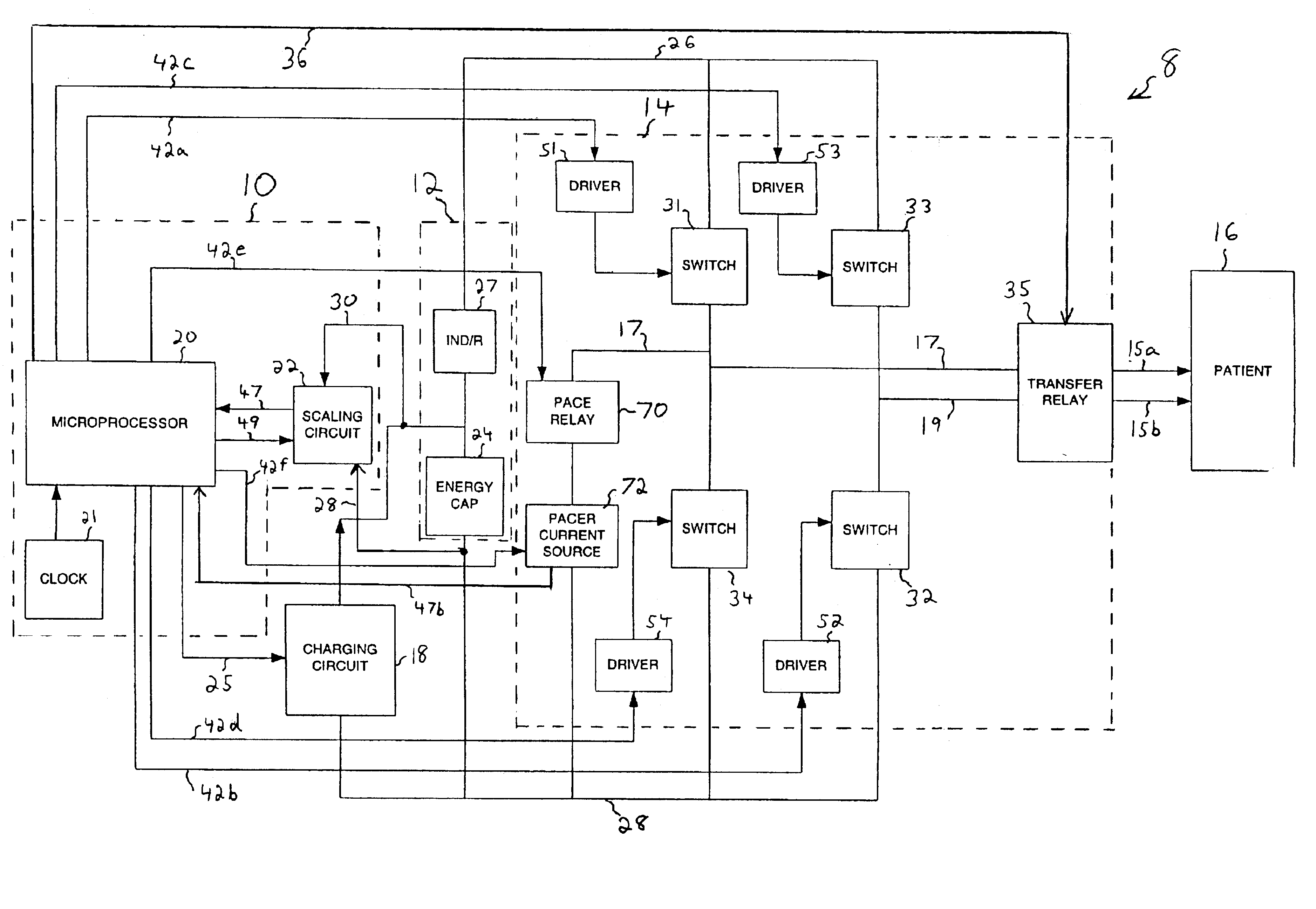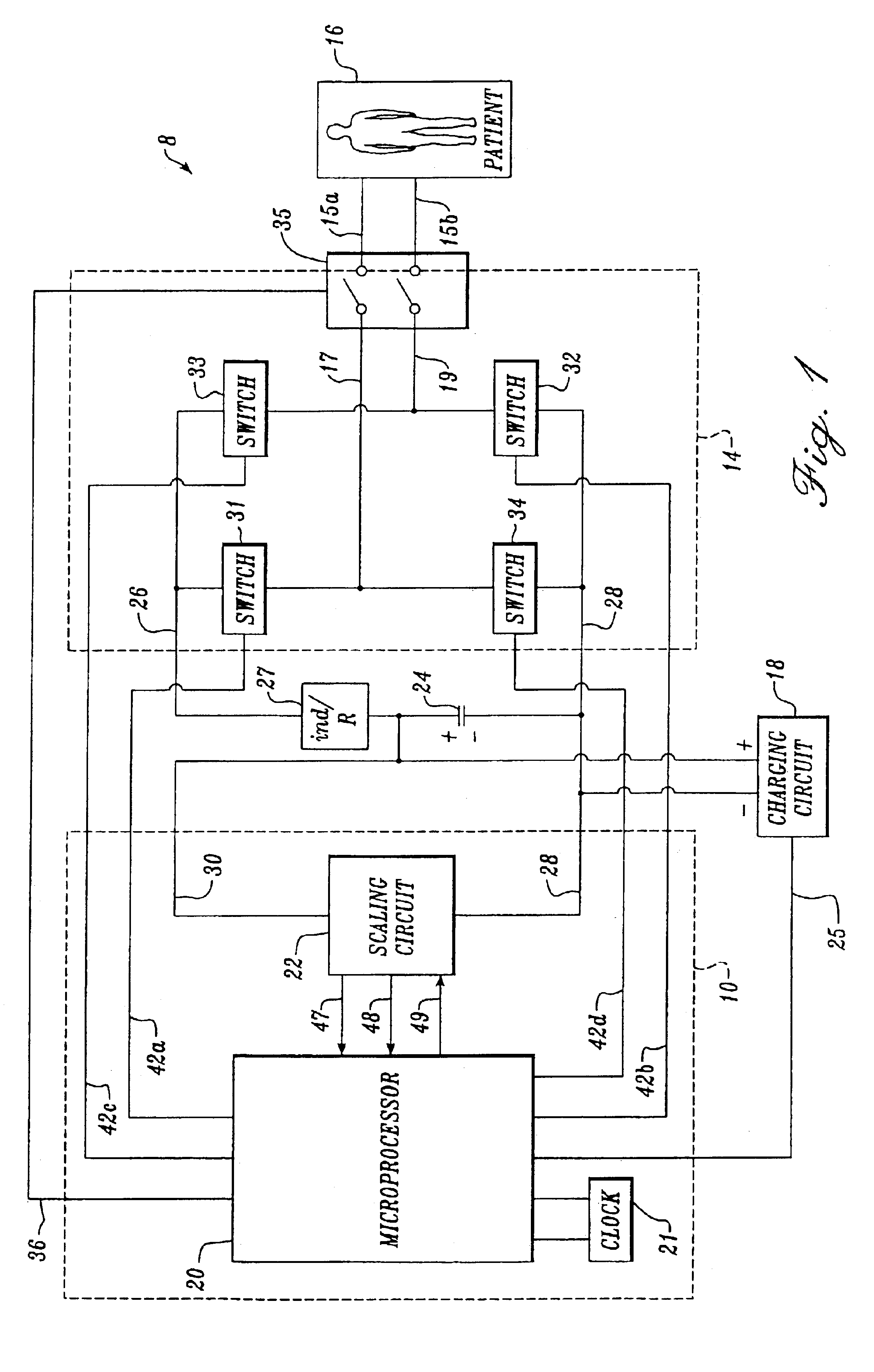H-bridge circuit for generating a high-energy biphasic waveform in an external defibrillator using single SCR and IGBT switches in an integrated package
a biphasic waveform and circuit technology, applied in the field of circuits for generating biphasic waveforms in external defibrillators, can solve the problems of ventricular fibrillation, common and life-threatening medical conditions, and the output circuit of implantable defibrillators is not adaptable for use in external defibrillators, and achieves sufficient current conducting capability, high energy discharge, and low energy
- Summary
- Abstract
- Description
- Claims
- Application Information
AI Technical Summary
Benefits of technology
Problems solved by technology
Method used
Image
Examples
Embodiment Construction
[0040]FIG. 1 is a block diagram of an external defibrillator 8 that is connected to a patient 16. The defibrillator includes a microprocessor 20 that is connected to an energy storage capacitor 24 via a charging circuit 18. During the operation of the defibrillator, the microprocessor controls the charging circuit 18 by a signal on a control line 25 to charge the energy storage capacitor to a desired voltage level. To monitor the charging process, the microprocessor is connected to a scaling circuit 22 by a pair of measurement lines 47 and 48, and by a control line 49. The scaling circuit 22 is connected to the energy storage capacitor 24 by a bridge line 28, which connects to the negative lead of the capacitor, and by a line 30, which connects to the positive lead of the capacitor. A clock 21 is also connected to the microprocessor 20.
[0041]The scaling circuit 22 is used to step down the voltage across the energy storage capacitor 24 to a range that may be monitored by the micropro...
PUM
 Login to View More
Login to View More Abstract
Description
Claims
Application Information
 Login to View More
Login to View More - R&D
- Intellectual Property
- Life Sciences
- Materials
- Tech Scout
- Unparalleled Data Quality
- Higher Quality Content
- 60% Fewer Hallucinations
Browse by: Latest US Patents, China's latest patents, Technical Efficacy Thesaurus, Application Domain, Technology Topic, Popular Technical Reports.
© 2025 PatSnap. All rights reserved.Legal|Privacy policy|Modern Slavery Act Transparency Statement|Sitemap|About US| Contact US: help@patsnap.com



